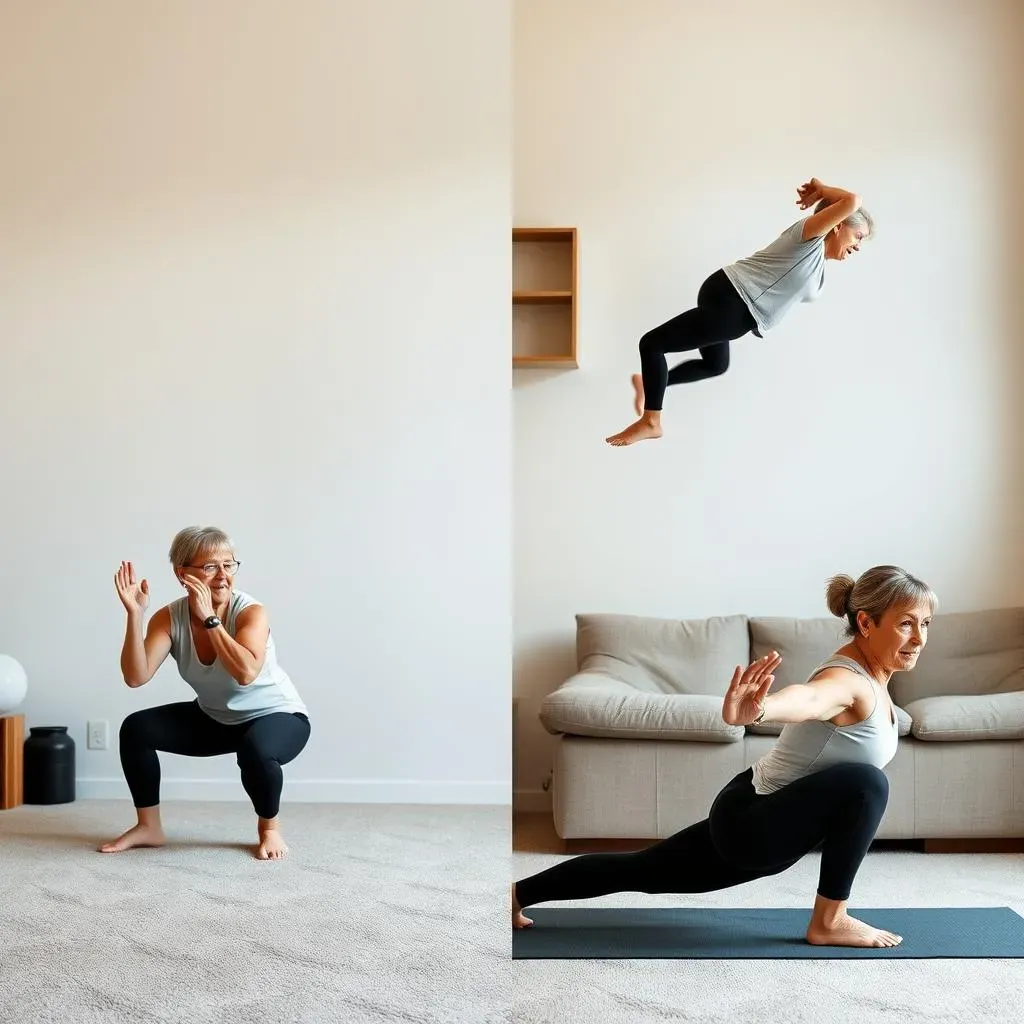Table of Contents
Turning 50 doesn't mean your fitness journey has to end; in fact, it's a great time to focus on strength and well-being. This article is your guide to achieving a stronger, more toned physique with butt workouts at home for over 50. We'll explore why maintaining strong glutes is especially important as we age, addressing concerns about balance, mobility, and injury prevention. You'll discover a range of exercises, from beginner-friendly moves to more challenging routines, all designed to be performed safely and effectively in the comfort of your own home. No fancy equipment is needed – just your bodyweight and a commitment to a healthier you. We'll break down the science behind glute activation and provide modifications to suit different fitness levels. Get ready to rediscover your strength, improve your posture, and feel confident in your body. Let's get started on your path to a stronger, more energized you!
Why Butt Workouts Matter After 50
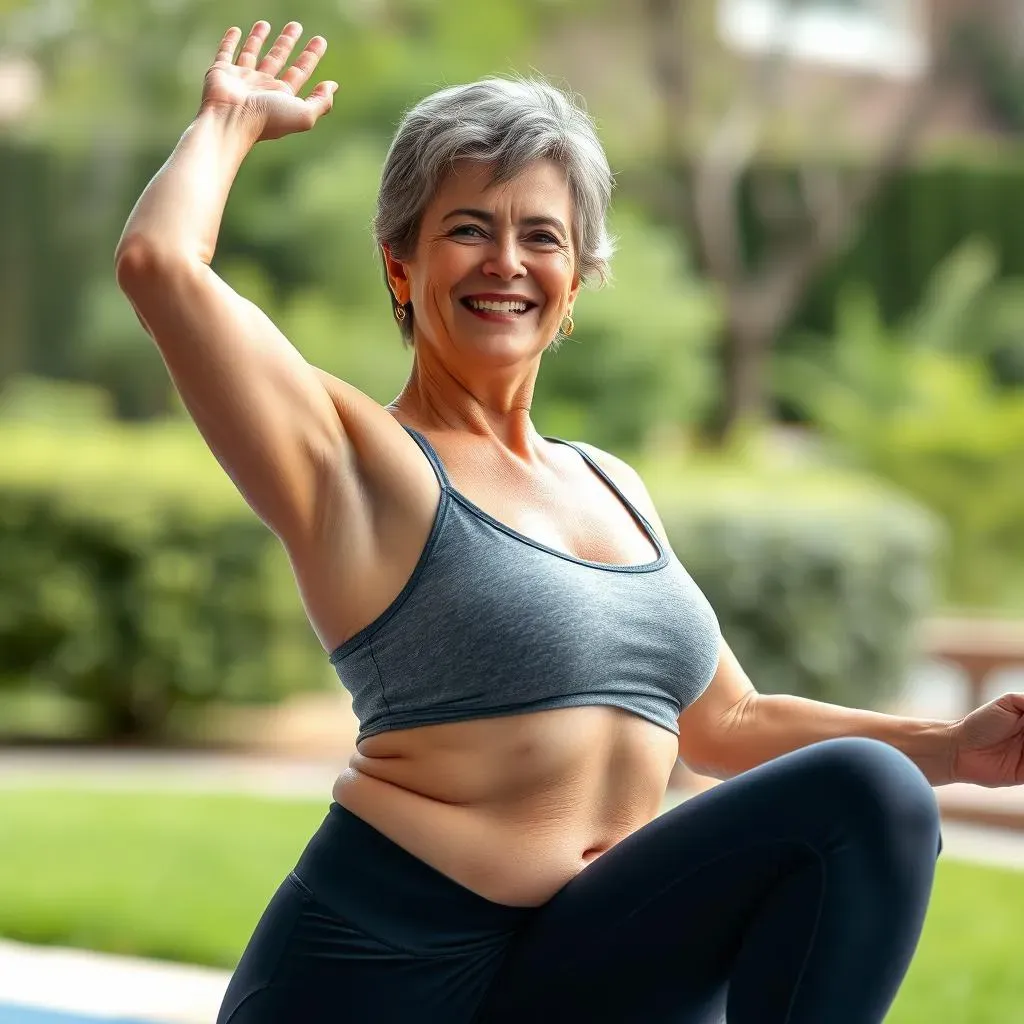
Why Butt Workouts Matter After 50
The Gluteus Maximus: Your Body's Unsung Hero
Think of your glutes – your gluteus maximus, medius, and minimus – as the powerhouse of your lower body. They're not just about aesthetics; they're crucial for everyday movements like walking, climbing stairs, and even getting up from a chair. As we age, these muscles naturally weaken, leading to decreased stability and an increased risk of falls. Strengthening your glutes helps prevent these issues, keeping you mobile and independent for longer.
Strong glutes are like the foundation of a house – a sturdy base is essential for stability and longevity. Weak glutes, on the other hand, are like a shaky foundation, prone to collapse under pressure (or even everyday activities!). Investing in glute strength is an investment in your long-term health and mobility.
Age-Related Changes | Impact on Glutes | Solution |
|---|---|---|
Muscle Loss (Sarcopenia) | Weakened glutes, reduced stability | Targeted glute exercises |
Decreased Balance | Increased risk of falls | Improved core and glute strength |
Reduced Mobility | Difficulty with everyday tasks | Stronger leg and hip muscles |
Preventing Falls and Injuries: A Proactive Approach
Falls are a serious concern for older adults, often leading to fractures and other injuries. Weak glutes significantly contribute to this risk. By building strong glutes, you improve your balance and stability, reducing your chances of taking a tumble. Think of it as preventative maintenance for your body – investing in strength training now can save you from significant problems later.
Beyond falls, strong glutes play a vital role in supporting your back and knees. They help stabilize your spine and reduce strain on your joints, alleviating back pain and improving posture. This is particularly important as we age, when joint pain and back problems become more common. Strengthening your glutes can be a game-changer for managing these conditions.
- Improved balance and coordination
- Reduced risk of falls and injuries
- Better posture and reduced back pain
- Enhanced mobility and independence
Boosting Your Overall Fitness and Well-being
Strong glutes aren't just about preventing problems; they also contribute to a more active and enjoyable life. Improved physical function means you can participate in more activities you love – whether it's gardening, playing with grandchildren, or simply enjoying a brisk walk. This increased activity level, in turn, boosts your overall health and well-being, contributing to a happier and more fulfilling life.
Remember that fitness is a journey, not a destination. Start small, listen to your body, and celebrate your progress. Even small improvements in glute strength can make a big difference in your daily life. It’s all about building a stronger, healthier, and more confident you.
"Don't let age define your fitness. Embrace strength training and unlock your potential." - Anonymous Fitness Enthusiast
Safe and Effective Butt Workouts at Home for Over 50
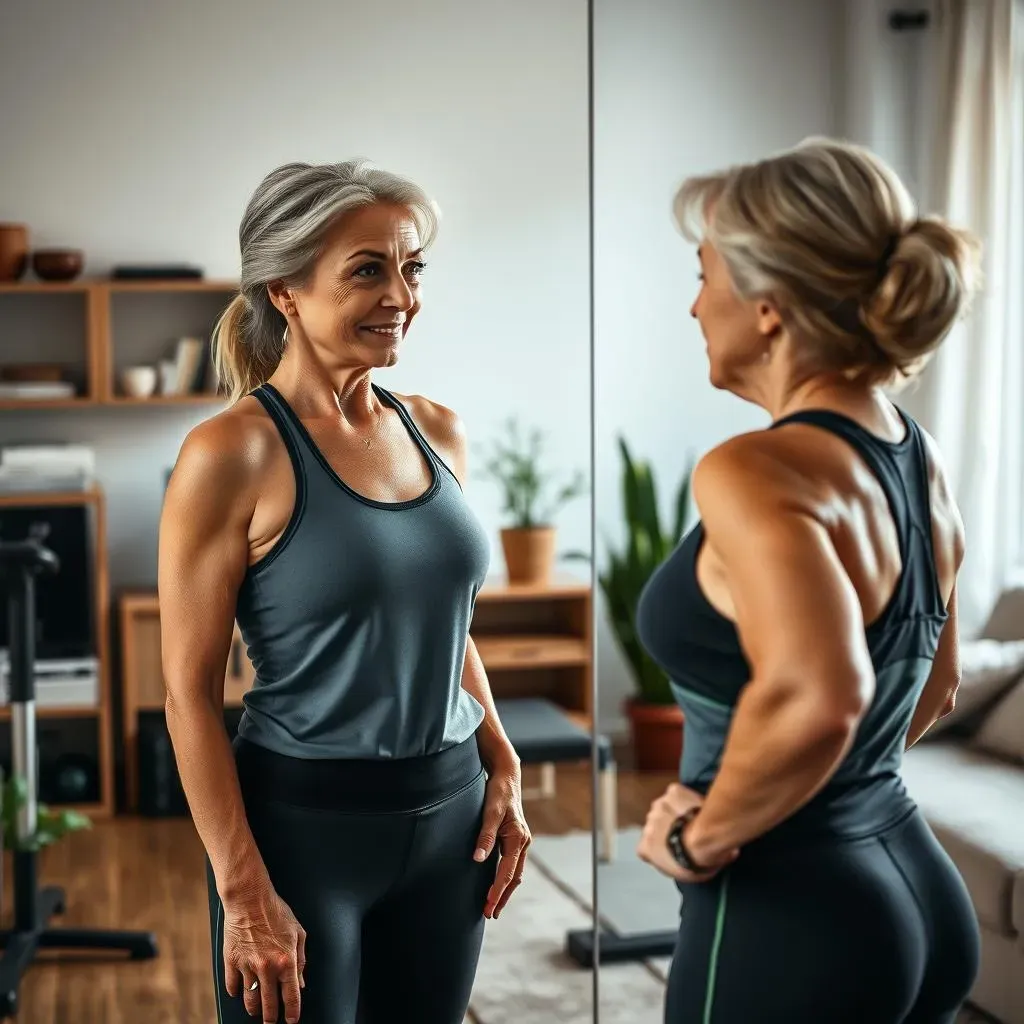
Safe and Effective Butt Workouts at Home for Over 50
Prioritizing Safety: Listening to Your Body
Before we dive into specific exercises, let's talk about safety. As we age, our bodies change, and it's crucial to listen to what they're telling us. Start slowly and gradually increase the intensity and duration of your workouts. Don't push yourself too hard, especially when starting. If you feel any pain, stop immediately. Remember, consistency is key; a short, well-executed workout is better than an intense session that leads to injury.
It's also a good idea to consult your doctor or physical therapist before starting any new exercise program, particularly if you have pre-existing health conditions. They can assess your fitness level and help you create a safe and effective plan. Don't be afraid to ask for professional guidance; it's a smart investment in your long-term health.
Safety Tip | Explanation |
|---|---|
Listen to your body | Stop if you feel pain. |
Start slowly | Gradually increase intensity. |
Consult your doctor | Get professional guidance. |
Choosing the Right Exercises: Low-Impact Options
Many effective glute exercises can be done at home without any equipment. Focus on low-impact exercises that minimize stress on your joints. These include bodyweight squats, glute bridges, and leg raises. These exercises target your glutes without putting excessive strain on your knees or back. You can modify these exercises to make them easier or harder, depending on your fitness level. For instance, you can perform chair squats instead of regular squats.
Remember to maintain proper form throughout each exercise to maximize effectiveness and minimize the risk of injury. Watch videos, read instructions carefully, and consider working with a trainer initially to ensure you're using the correct technique. Proper form is more important than the number of repetitions or sets you complete.
- Bodyweight Squats
- Glute Bridges
- Leg Raises
- Walking Lunges
- Side-Lying Leg Raises
Building a Routine: Consistency and Progression
Consistency is key to seeing results. Aim for at least two to three workouts per week, allowing for rest days in between. Start with shorter workouts (15-20 minutes) and gradually increase the duration and intensity as you get stronger. Don't be afraid to experiment with different exercises and find what works best for you. The most important thing is to find a routine you enjoy and can stick with.
Remember that progress takes time, so be patient and celebrate your achievements along the way. Don't get discouraged if you don't see results immediately. Keep at it, and you will see improvement in your strength, balance, and overall fitness. Remember, every step counts!
"The body achieves what the mind believes." - Napoleon Hill
BeginnerFriendly Butt Exercises for Over 50 at Home
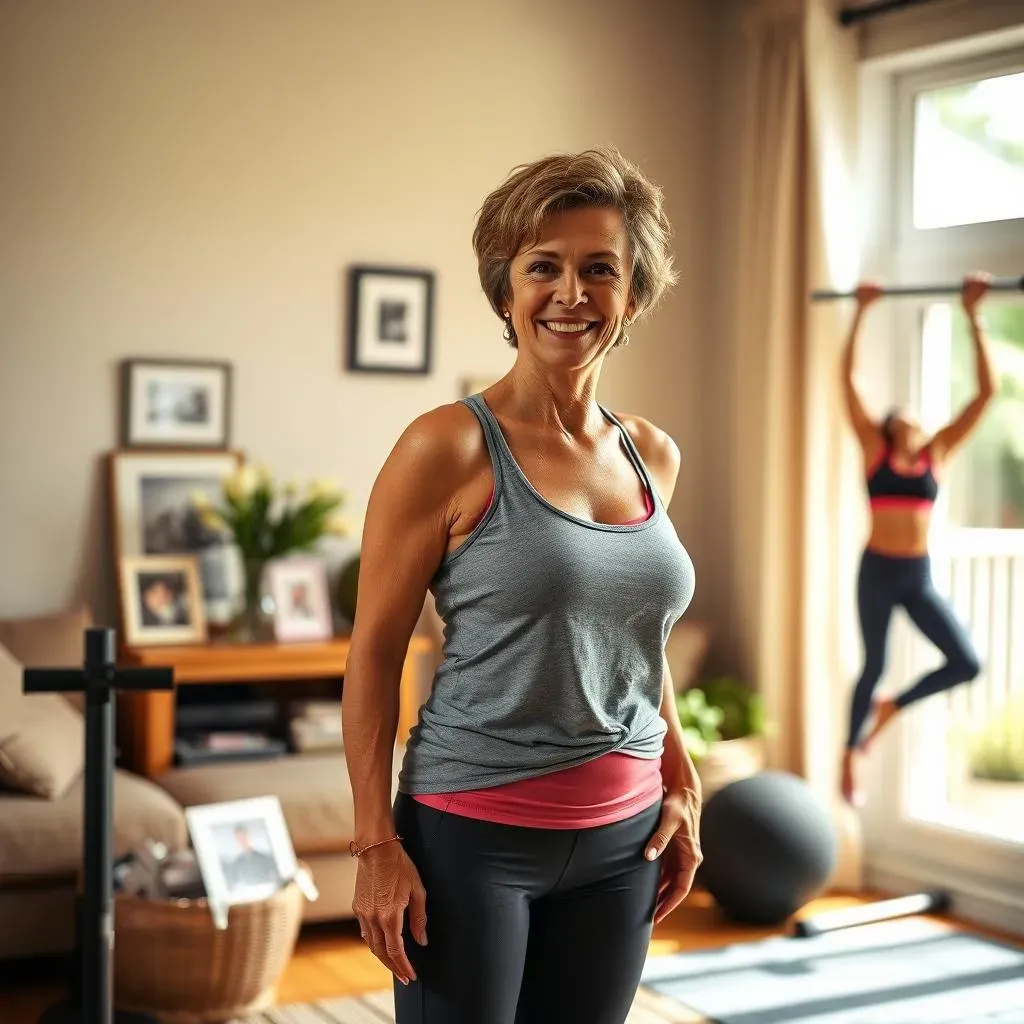
BeginnerFriendly Butt Exercises for Over 50 at Home
Getting Started: Simple Exercises for Beginners
Let's face it, jumping straight into intense workouts isn't ideal for beginners, especially those over 50. We need to build a solid foundation of strength and stability before tackling more advanced moves. That's why we'll start with some incredibly simple, yet highly effective, exercises. These are designed to engage your glutes without putting undue stress on your joints. Think of them as the building blocks of a stronger, more confident you. We'll focus on proper form and gradually increase the intensity as you gain strength and confidence.
Remember, consistency is key! Even a few minutes of dedicated exercise each day can make a significant difference over time. Don't compare yourself to others; focus on your own progress and celebrate your achievements. You're doing great!
Exercise | Description | Reps/Sets |
|---|---|---|
Wall Sit | Stand with your back against a wall, slide down until your knees are bent at a 90-degree angle. Hold. | Hold for 15-30 seconds, 3 sets |
Glute Bridge | Lie on your back with knees bent, feet flat on the floor. Lift your hips off the floor, squeezing your glutes. | 10-15 reps, 3 sets |
Chair Squats: A Gentle Introduction to Squats
Chair squats are a fantastic modification of regular squats, making them perfect for beginners and those with joint issues. They provide the same glute-activating benefits as regular squats but reduce the strain on your knees by providing support. Simply stand in front of a sturdy chair, perform a squat, and gently use the chair for support if needed. This allows you to focus on the correct form and gradually build your strength and balance.
As you get stronger, you can gradually reduce your reliance on the chair, eventually progressing to unassisted squats. Remember to keep your back straight and your core engaged throughout the movement. Focus on controlled movements rather than speed or repetitions. Quality over quantity always wins!
- Start with 10-12 reps, 2-3 sets
- Increase reps/sets as you get stronger
- Focus on proper form and controlled movements
Advanced Butt Workouts at Home for Over 50: Level Up Your Routine
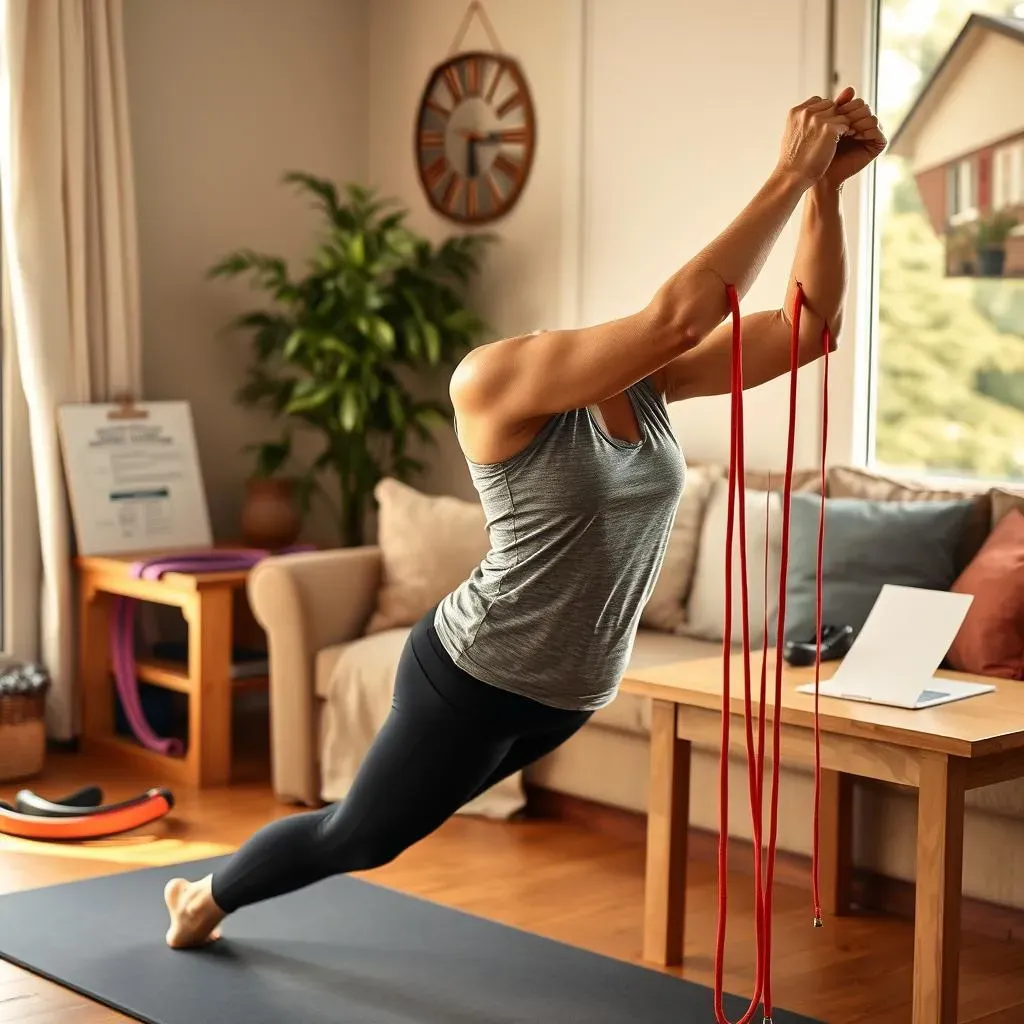
Advanced Butt Workouts at Home for Over 50: Level Up Your Routine
Adding Resistance: Taking Your Workouts to the Next Level
Once you've mastered the basic bodyweight exercises, it's time to add some resistance to challenge your muscles further. Resistance bands are an excellent option because they're affordable, easy to store, and offer a wide range of resistance levels. You can incorporate resistance bands into many exercises, such as glute bridges, squats, and leg raises, to increase the intensity and challenge your glutes more effectively. Start with lighter resistance and gradually increase the weight as you get stronger.
Remember, proper form is crucial, even with resistance bands. Don't sacrifice good technique for heavier resistance. It’s better to use lighter resistance and maintain perfect form than to use heavier resistance and risk injury. Start with 2-3 sets of 10-12 repetitions for each exercise. Listen to your body and adjust accordingly. You’ve got this!
Exercise | Resistance Band Placement | Modification |
|---|---|---|
Glute Bridge | Around thighs | Use lighter resistance band initially |
Squats | Around thighs | Increase resistance gradually |
Side Lunges | Around ankles | Maintain good posture |
Incorporating More Challenging Exercises: Building Strength and Endurance
As your strength and endurance increase, you can start incorporating more challenging exercises into your routine. These might include single-leg squats, jump squats (if your knees allow it), and plyometric exercises like box jumps (again, only if appropriate for your fitness level). These exercises require more balance and coordination, further challenging your glutes and improving your overall fitness. Remember to start slowly and gradually increase the intensity and repetitions as you get stronger.
It's important to listen to your body and avoid pushing yourself too hard, especially when trying new exercises. If you feel any pain, stop immediately and rest. Progress is important, but safety should always come first. Remember to focus on proper form and controlled movements to prevent injury and maximize results. You are amazing!
- Single-leg squats (beginner modification: use chair for support)
- Jump squats (only if appropriate for your fitness level)
- Box jumps (only if appropriate for your fitness level)
- Walking lunges with resistance bands
